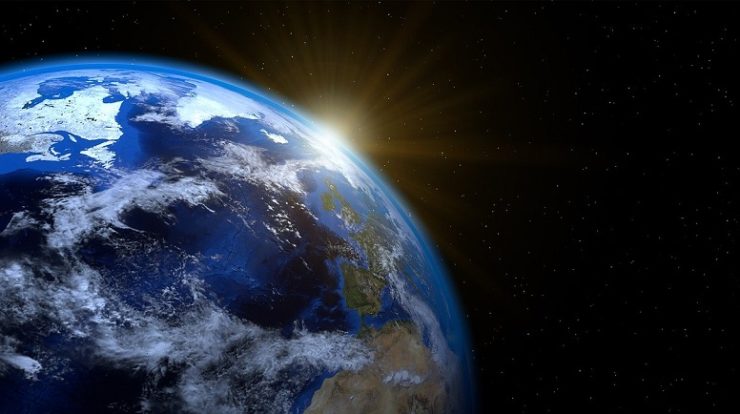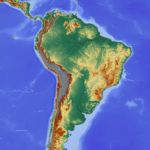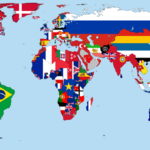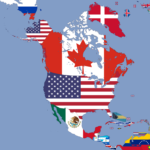
EASY EARTH QUIZ
Earth is the planet that we live and also home to countless animal and plant species. It’s the only planet in the observable universe that has liquid water and hosts life. The shape of earth is not perfectly spherical; the radius of earth is 3950 miles at the polar axis and 3959 miles at the equatorial axis.
Earth is the third planet from the Sun and fifth largest planet in the solar system; smaller than Jupiter, Saturn, Uranus and Neptune.
Although we can’t feel it, Earth is rotating around its own axis all the time, one complete rotation takes about 24 hours. The speed of Earth’s spin is about 1000 miles per hour at the equator. While Earth rotates, it also orbits the Sun at the speed of about 67000 miles per hour. It takes 365.256 days for Earth to make a 584 million miles trip and complete one orbit around the Sun, and the time Earth takes to make a full orbit is what we call a ‘year’.
But in the modern Gregorian calendar, a year consists of 365 days, which doesn’t match the solar year. So one-quarter of a day is left over at the end of each year, therefore, an extra day is added to the calendar every four years to keep our calendar in alignment with the Earth’s revolution around the Sun.
As we described before, Earth is spinning around its axis at about 1000 miles per hour while also orbiting around the Sun at about 67000 miles per hour which is nearly 30 km per second. If Earth is moving so fast, why can’t we feel it?
The answer is actually pretty simple, we can only fee the speed when it changes, since Earth is spinning and moving at constant speeds, so we can’t feel any acceleration or deceleration.
A complete Earth’s spin takes 23.93 hours, and that’s the definition of how long a day is. While Earth spins, when we are on the side that is facing the sun we have day time. As Earth continues its spin and move us to the other half of Earth that facing away from the Sun, so we have night time.
And we have seasons because the planet’s axis of rotation is tiled at an angle of 23.5 degrees relative to its orbital plane around the Sun.
How Earth is formed remains a subject of debate. The most widely accepted theory is “core accretion”, which suggests the proto-Earth is formed by cosmic dusts and particles drew and bound together through gravity.
And over time, Earth’s interior differentiated into four layers, these layers are, from the interior to the exterior – the Inner and Outer Core, the Mantle, and the Crust.
The inner core is a solid ball mostly composed of iron with a radius of about 760 miles; The outer core, about 1400 miles thick, it’s the only liquid layer of Earth and is mostly composed of iron and nickel fluids; The mantle, about 1800 miles thick, it’s the largest layer of Earth and is mostly composed of solid rock; The outermost layer of Earth is called The Crust, it’s the thinnest one with a thickness that varies from 8 to 40 km.
The Crust is also the layer where humans live in. The landmasses on Earth are geographically divided into seven continents – Asia, Australia, Europe, South America, North America and Antarctica.
About 71% of Earth’s surface is covered with water, and most of it is in the oceans. And this vast body of water is geographically divided into Earth’s five major oceans, from the largest to smallest are – the Pacific, Atlantic, Indian, Southern and Arctic.
Floating above the crust is Earth’s atmosphere, a layer of gases that is composed of 78% nitrogen, 21% oxygen and small amounts of other gases such as carbon dioxide, argon and water vapor.
To know Earth is important because it is the only planet in the known universe that hosts life. All the layers and chemical richness of Earth not only creates life but also protect it.
Here we have covered 30 questions about our planet, take this EARTH QUIZ now and let’s see if you can answer all of them.





Share Your Score